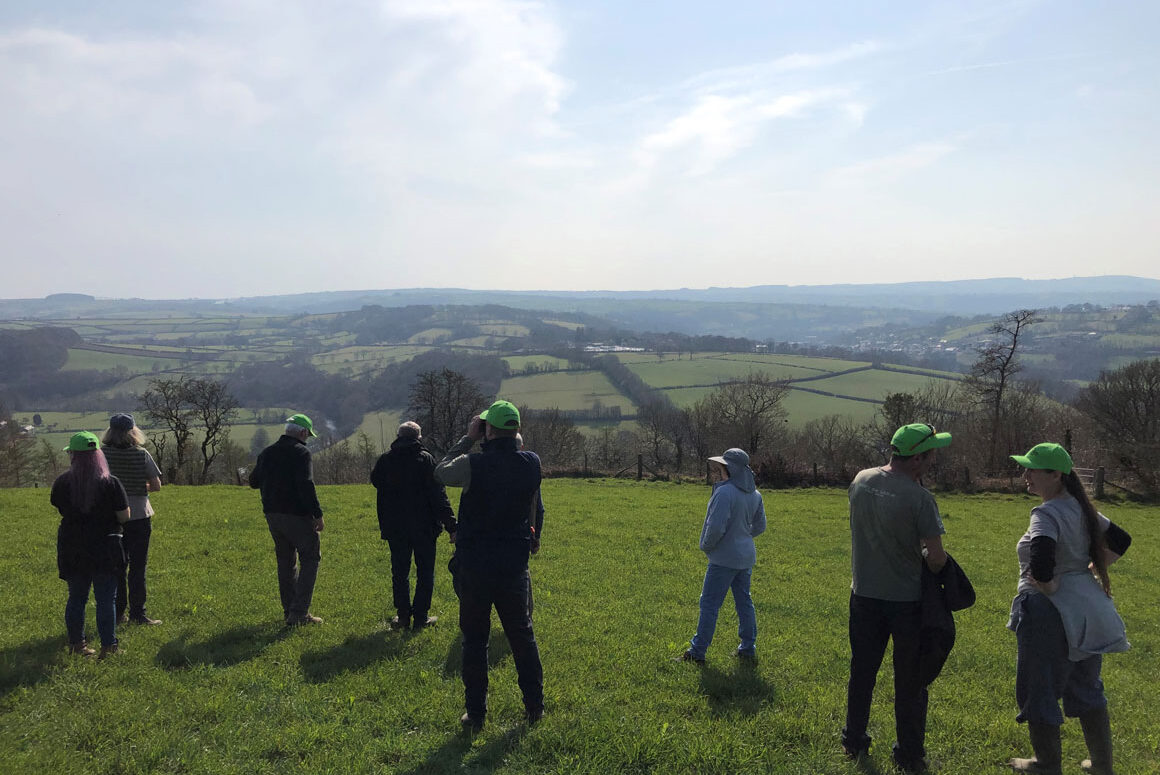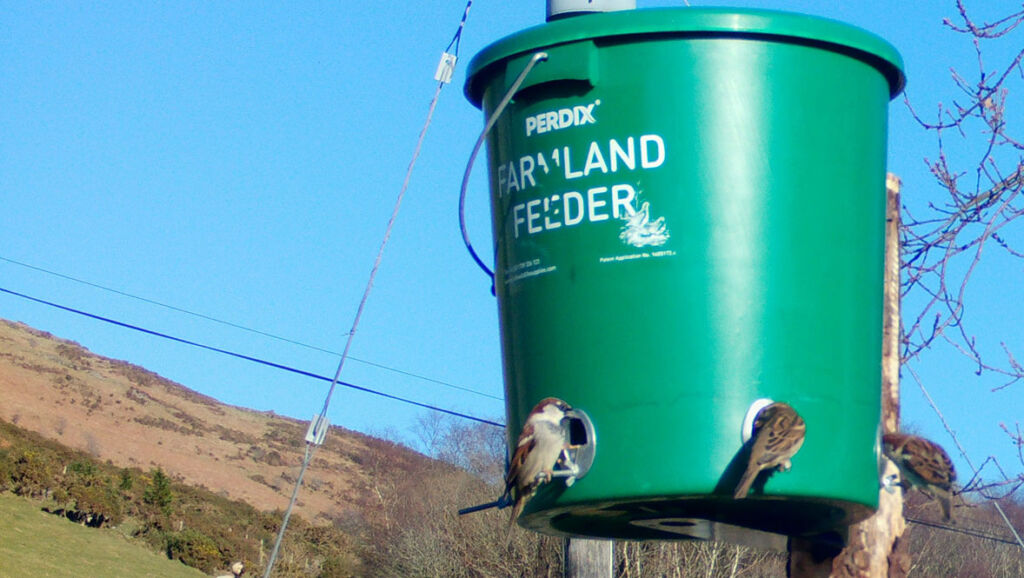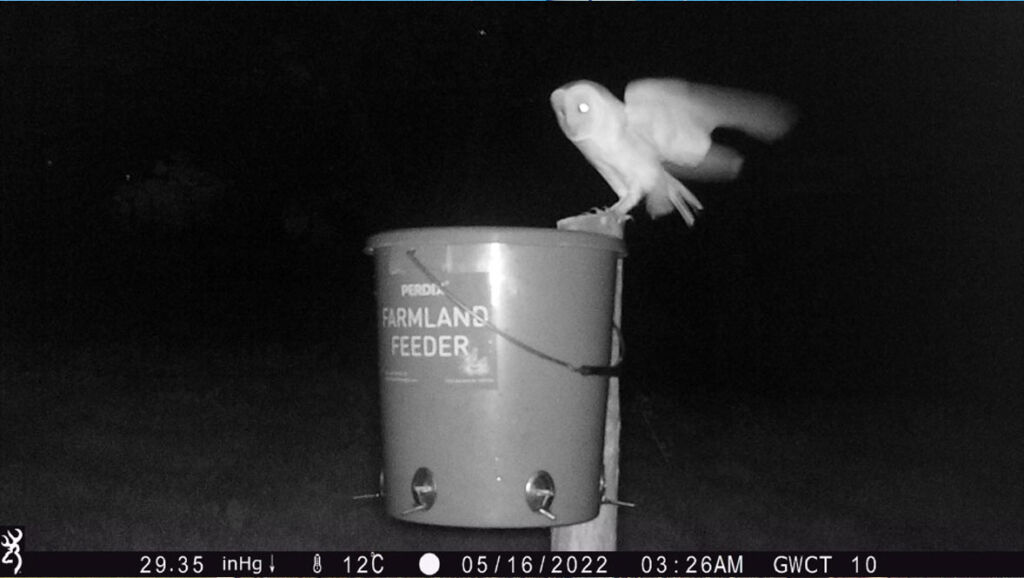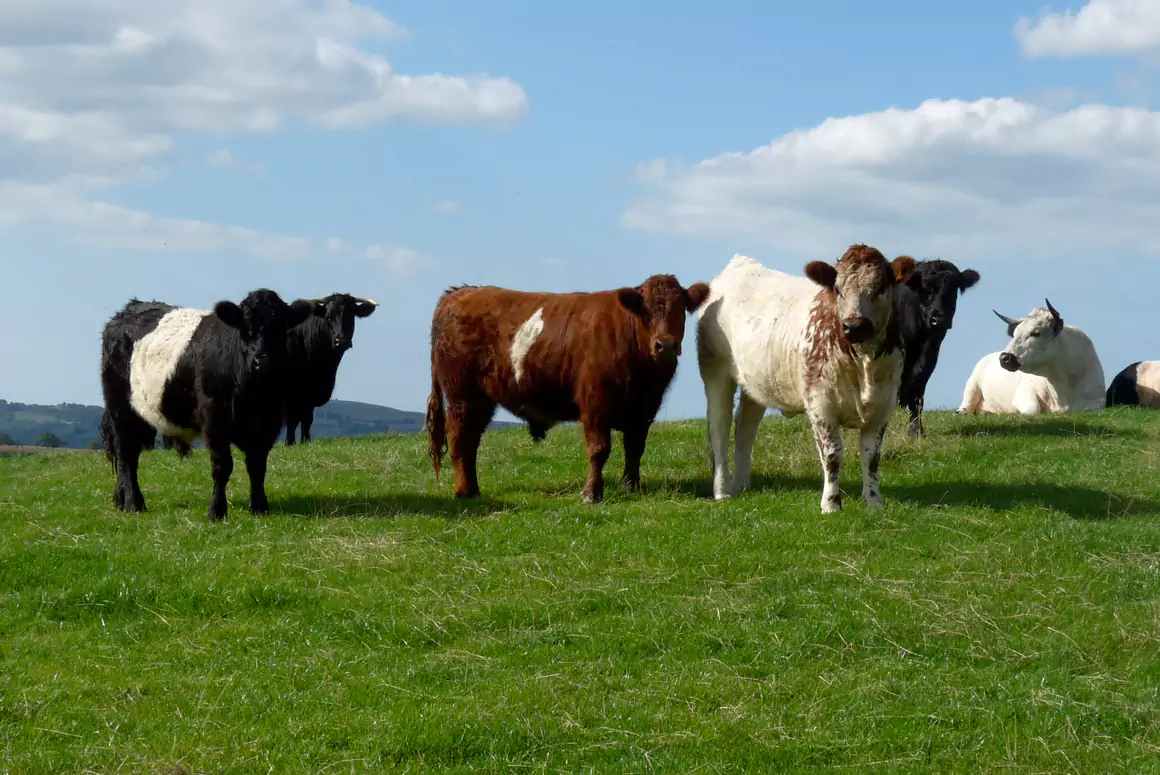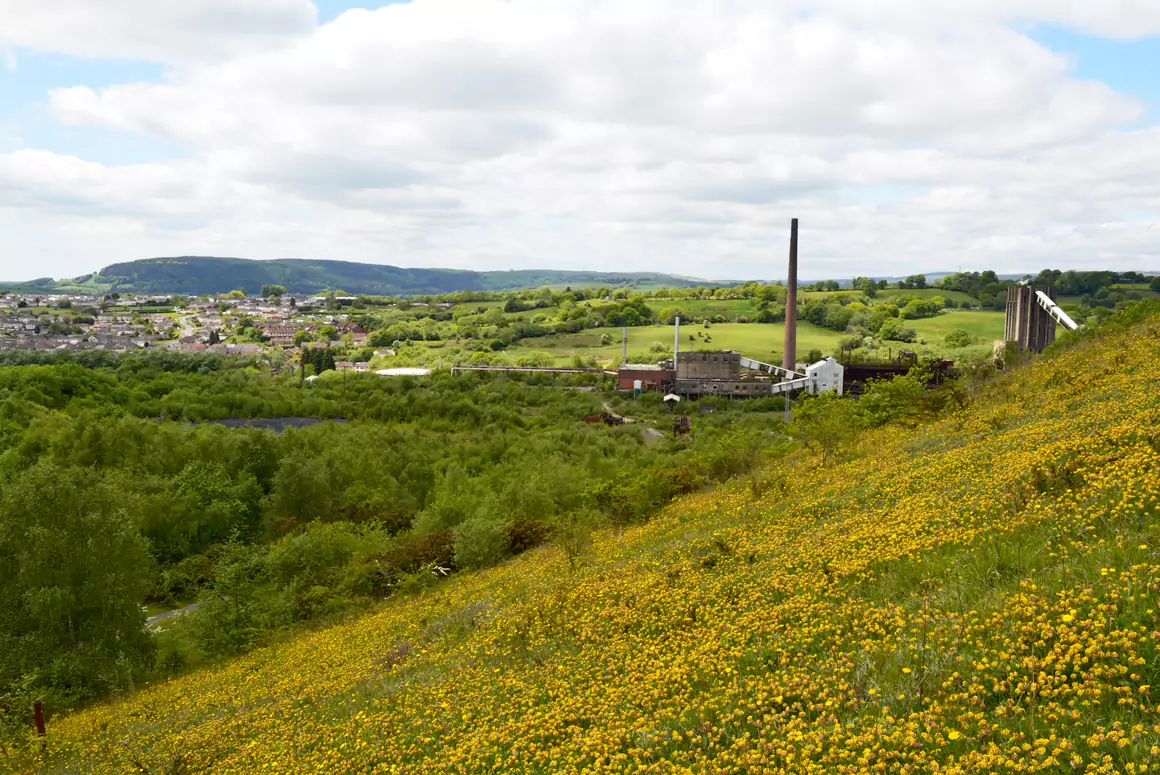![]()
Farmland Bird numbers have by some accounts fallen by 50% since the 1970’s. Across all types of agricultural land policies and subsidies developed between the 1970’s and 1990’s have encouraged an increase in food productivity and food security. These policies were very successful but!!
Because of the agricultural terrain in Wales intensive farming is not as prevalent as in other areas of the UK, but Wales is still suffering from a loss of farmland bird numbers.
Last winter 2021 / 2022 the Game and Wildlife Conservation Trust together with the Local Nature Partnership at Ceredigion County Council created the Ceredigion Farmland Feeder Project.
The project ran from October 2021 to March 2022, with the basic premise of providing 25 farms across Ceredigion with a single Farmland Feeder and a 250kg of seed, so that supplementary feed could be provided to farmland birds over what is known as the overwinter hungry gap. Farmers were invited to take part in the project via FUW, NFU, or word of mouth. Farmland Feeders were provided by Perdix, whilst the seed was provided by Kings Crops.
Each farmer also received a pair of binoculars which were loaned to them from the Ceredigion Local Nature Partnership to be used to watch the feeders and to take part in the Big Farmland Bird Count, a citizen science survey run by the GWCT for land managers (farmers, gamekeepers etc) to monitor species found on their farmland.
A camera trap was also placed on each feeder to monitor which species were using the feeders, and then a selection of the best photos taken on a feeder were sent to the respective farmers a few of which can be seen around the article.
Although the project was run across Wales, the county of Ceredigion had the highest number of participants in the Big Farmland Bird Count of any county in Wales for 2022
Across the entire period the camera traps were deployed across the farms, 25 bird species were recorded on camera (3 amber listed species and 4 red listed species*). The majority of observations were of more common species such as great tits, chaffinches and house sparrows, but there were also more novel observations such as long tailed tits, a yellowhammer and even a barn owl!
There was leftover seed on most of the farms from the original 250kg of seed provided. Following a questionnaire at the end of the project, all of the respondents said that they wanted to help continue the conservation and would use the leftover seed to continue supplementary feeding the this winter.
The 2023 Big Farmland Bird Count takes place from 3-19 February for more information go to www.bfbc.org.uk
- For a full list of Amber and red listed species go to www.bto.org/our-science/publications/birds-conservation-concern
2022 Project Details
- The project ran from October 2021 to March 2022
- The basic premise was to provide 25 farms across Ceredigion with a single Farmland Feeder and a 250kg of seed, so that supplementary feed could be provided to farmland birds over what is known as the overwinter hungry gap. Farmers were invited to take part in the project via FUW, NFU, or word of mouth. Farmland Feeders were provided by Perdix, whilst the seed was provided by Kings Crops.
- Each farmer also received a pair of binoculars which were loaned to them from the Ceredigion Local Nature Partnership to be used to watch the feeders and to take part in the Big Farmland Bird Count, a citizen science survey run by the GWCT for land managers (farmers, gamekeepers etc) to monitor species found on their farmland (more details here on the survey here: Big Farmland Bird Count – Game & Wildlife Conservation Trust (bfbc.org.uk))
- A camera trap was also placed on each feeder to monitor which species were using the feeders, and then a selection of the best photos taken on a feeder were sent to the respective farmers (see attached photos)
Some of the main outcomes were as follows:
- Ceredigion had the highest number of participants in the Big Farmland Bird Count of any county in Wales for 2022
- Across the entire period the camera traps were deployed across the farms, 25 bird species were recorded on camera (3 amber listed species and 4 red listed species). The majority of observations were of more common species such as great tits, chaffinches and house sparrows, but there were also more novel observations such as long tailed tits, a yellowhammer and even a barn owl!
- There was leftover seed on most of the farms from the original 250kg of seed provided. Following a questionnaire at the end of the project, 100% of the (15) respondents said that they would use the leftover seed to continue supplementary feeding the following winter. Also, 100% of the (15%) respondents said that they would continue supplementary feeding if appropriate payment was available in the future Sustainable Farming Scheme.


